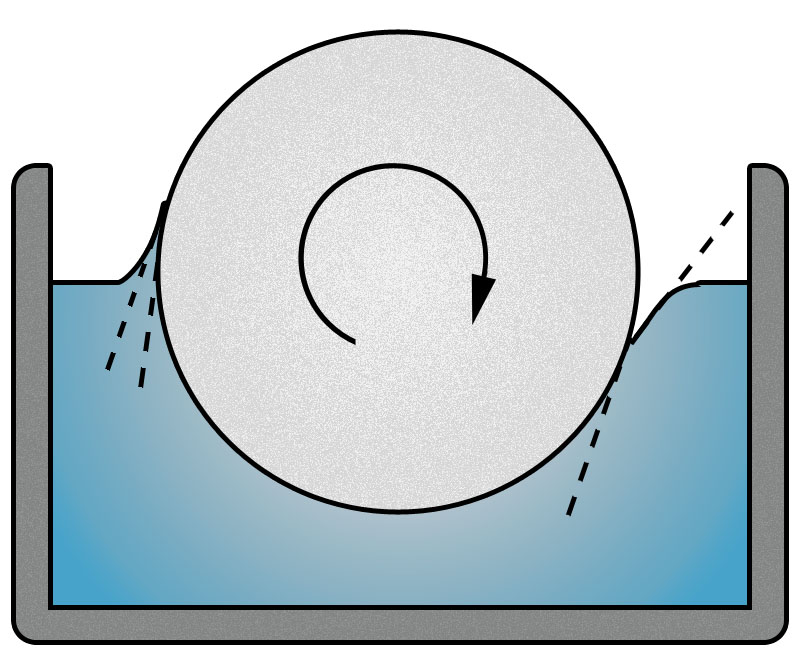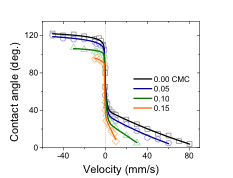Research - Dynamic Wetting
Wetting of surfactant solutions
Dynamic wetting:
The dynamic wetting of simple liquids on planar, smooth, homogeneous, inert surfaces is relatively well understood. We study the dynamic wetting of complex liquids on surfaces. As a "complex liquids" we understand a liquid, which is structured at different length scale or shows internale relaxation. Examples include dispersion, emulsion, polymer solutions and melts, and surfactant solutions. Spontaneous and forced wetting and dewetting is analyzed.
Force wetting and dewetting of surfactant solutions:
Forced wetting and dewetting of polymer surfaces in aqueous solutions containing cationic surfactant cetyltrimethylammonium bromide (CTAB) has been studied with a rotating cylinder half immersed in the solution. The receding contact angle decreases with faster withdrawing speeds. This decrease is enhanced when adding CTAB. The addition of salt to the CTAB solution further enhances the effect, but does not have a significant effect alone.We interpret this change in the dynamic contact angle with a surfactant-induced Marangoni effect.
 |
 |
- Fell, D., G. K. Auernhammer, E. Bonaccurso, C. Liu, M. Sokuler, and H.-J. Butt;
Influence of surfactant concentration and background salt on forced dynamic wetting and dewetting;
Langmuir 27, 2112-2117 (2011). - Fell, D., N. Pawanrat, E. Bonaccurso, H.-J. Butt, and G. K. Auernhammer;
Influence of surfactant transport suppression on dynamic contact angle hysteresis;
Coll. Polymer Sci. 291, 361 (2013), DOI 10.1007/s00396-012-2759-y.

